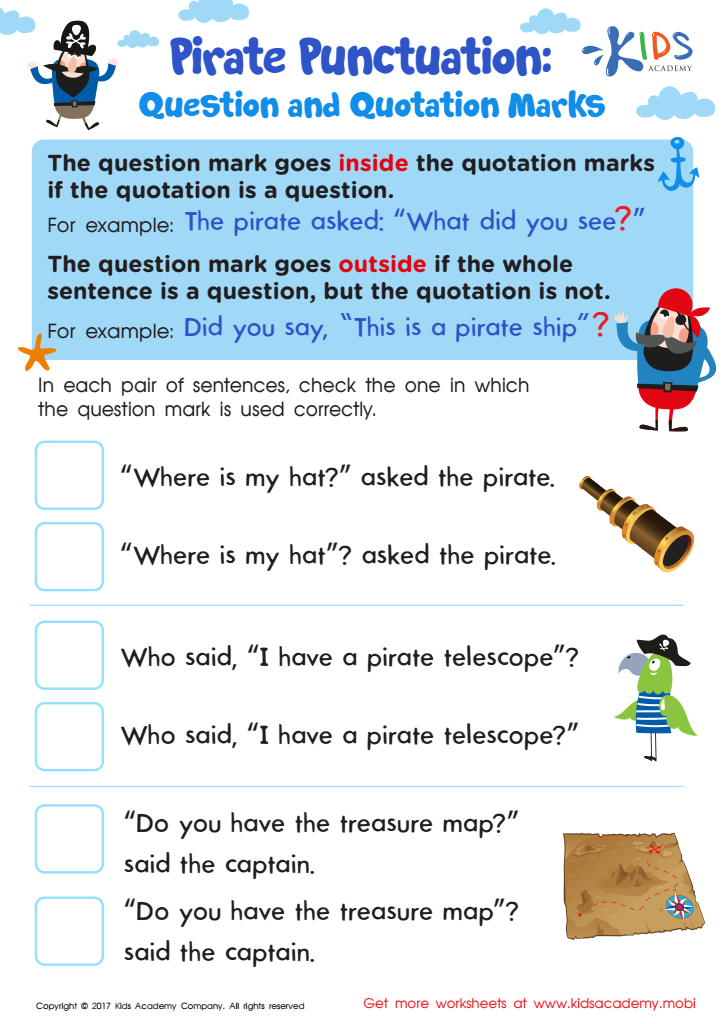Understanding quotation marks Worksheets for Kids
1 filtered results
-
From - To


Question and Quotation Marks Worksheet
Question/Answer
Why is the Understanding quotation marks skill important for Grade 3 students?
The Understanding quotation marks skill is vital for Grade 3 students as it helps them identify direct speech, differentiate between speech and narration, and understand characters' thoughts or spoken words in texts. This foundational skill enhances their reading comprehension, writing clarity, and builds a basis for effective communication and storytelling abilities, essential elements in their academic development.
What does the Understanding quotation marks skill mean when it comes to Grade 3 Punctuation learning?
The Understanding quotation marks skill in Grade 3 Punctuation learning involves teaching students how to properly use quotation marks. This skill focuses on recognizing and applying quotation marks to indicate direct speech, titles of short works, or to highlight specific words or phrases.
How to train the Understanding quotation marks skill in Grade 3 students learning about Punctuation?
To train Grade 3 students in understanding quotation marks, introduce the concept through storytelling or reading aloud, emphasizing spoken dialogue. Use visual aids like posters showing quoted speech and practice worksheets for identifying and properly using quotation marks. Incorporate fun activities like role-playing conversations or creating comic strips that require quoted dialogue to reinforce learning in an engaging manner.
 Assign to the classroom
Assign to the classroom










